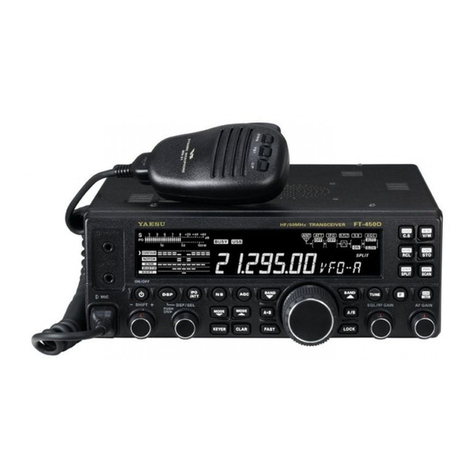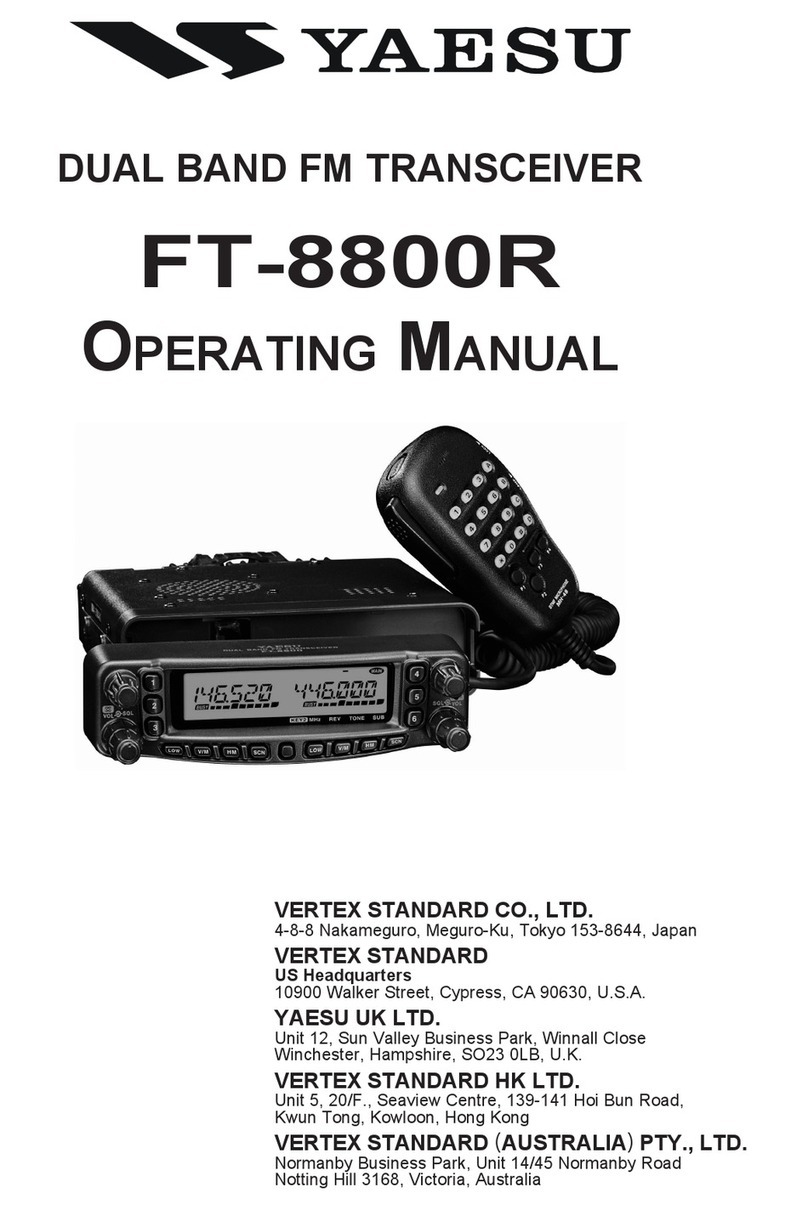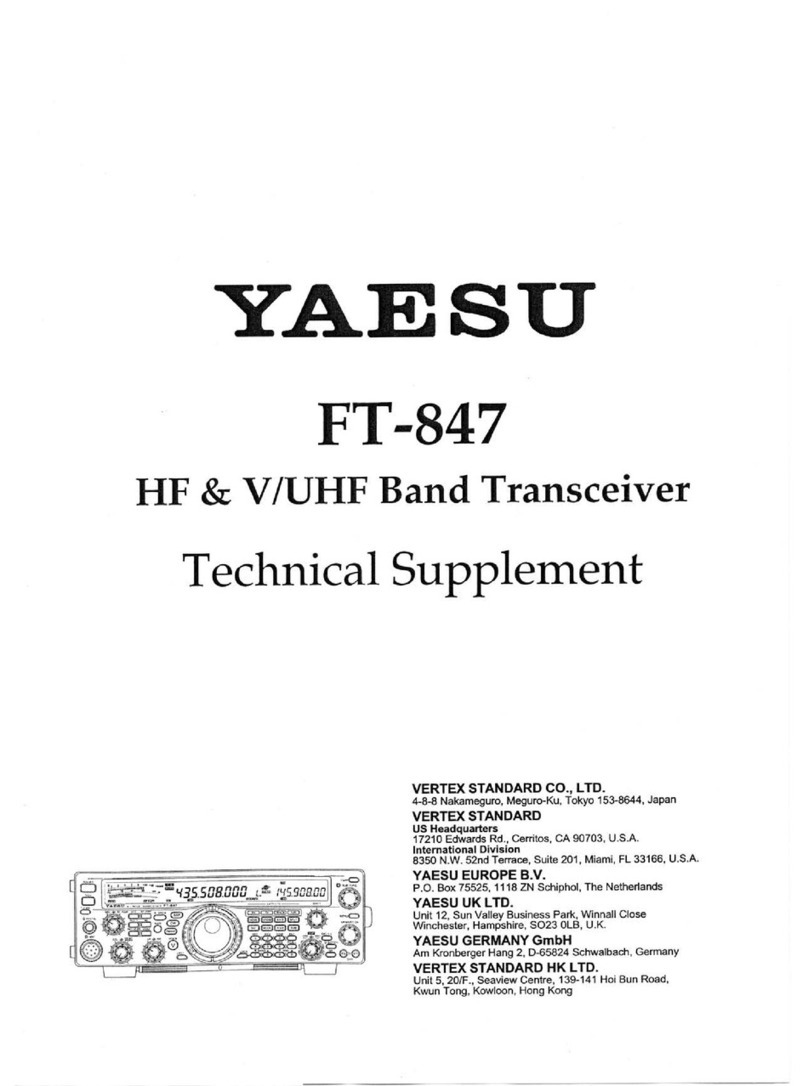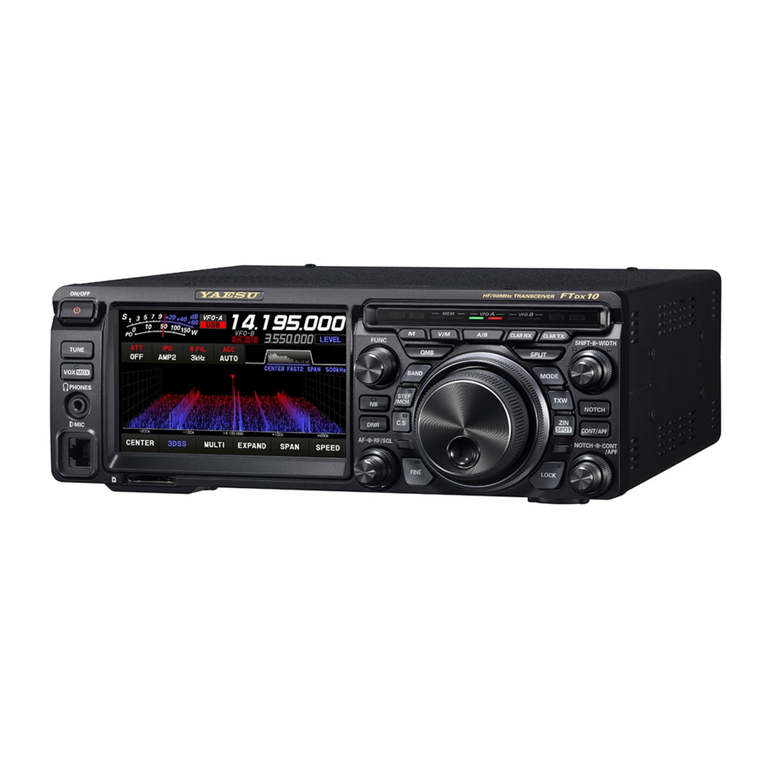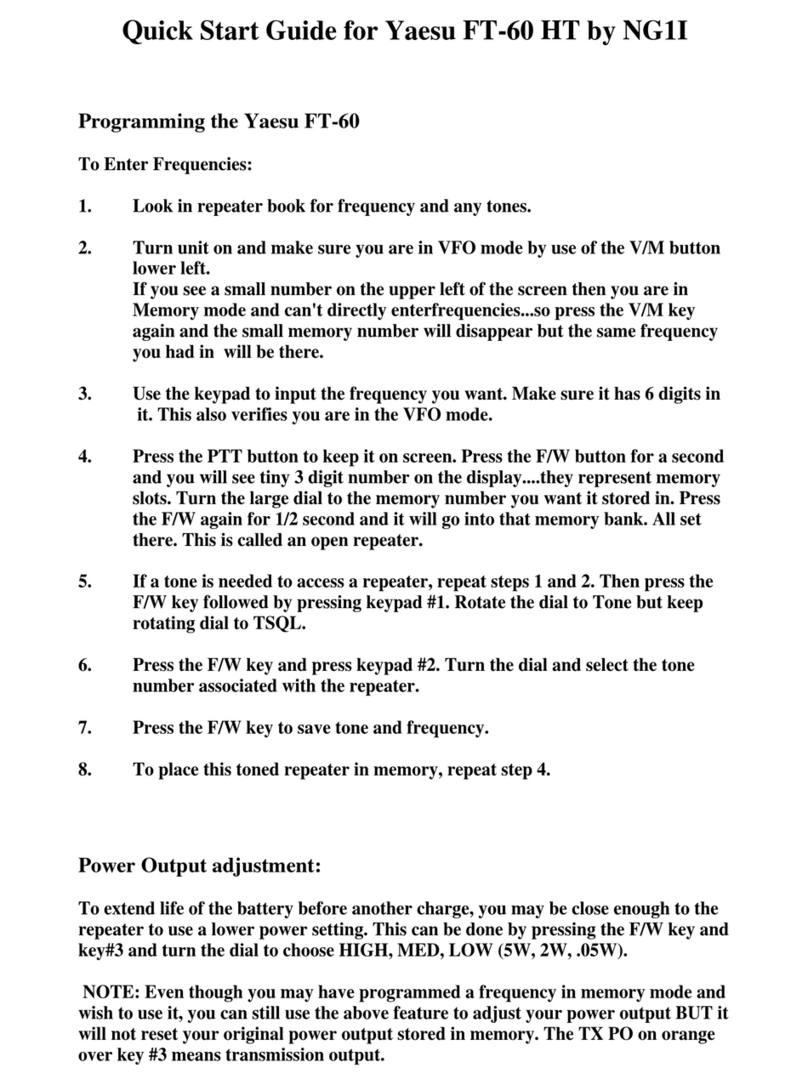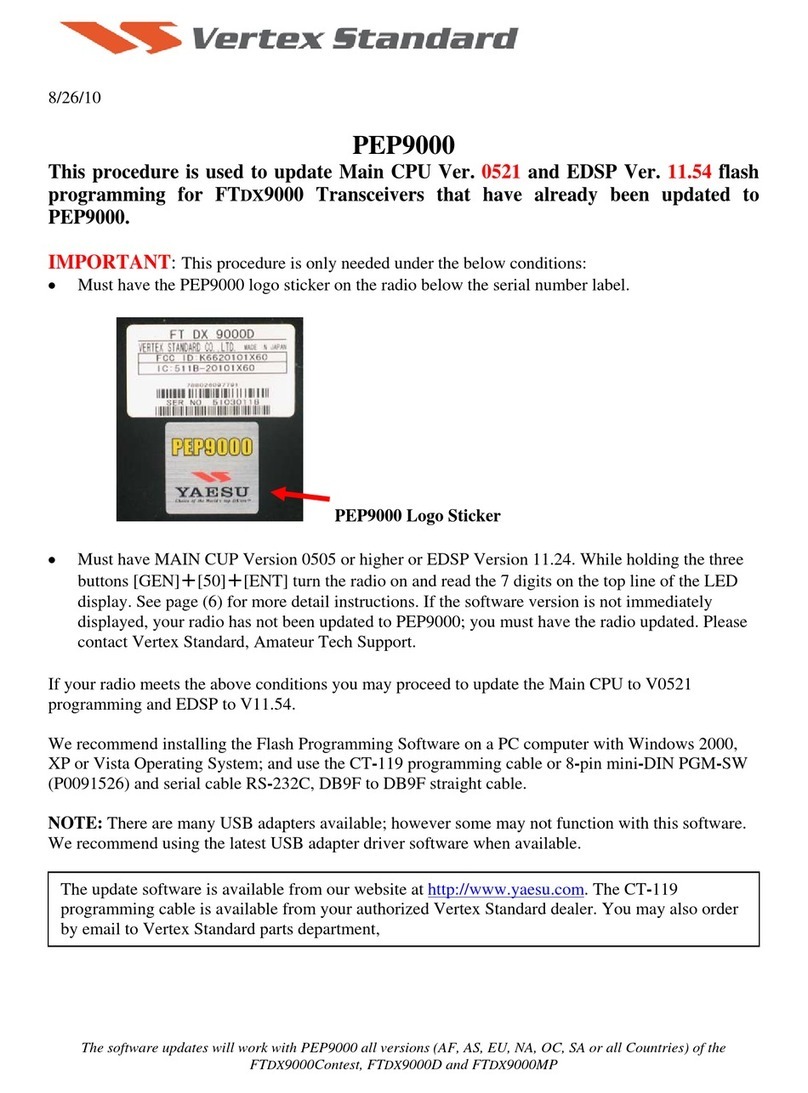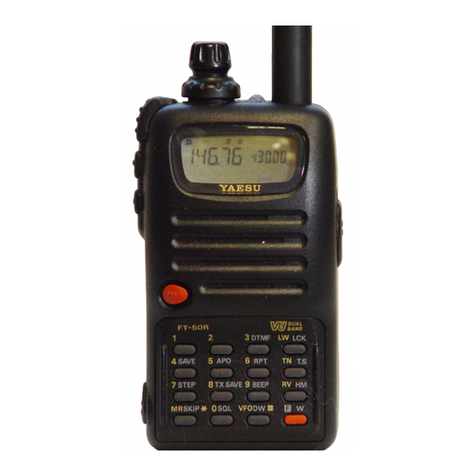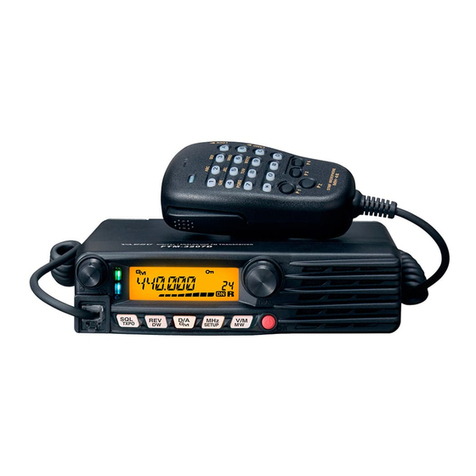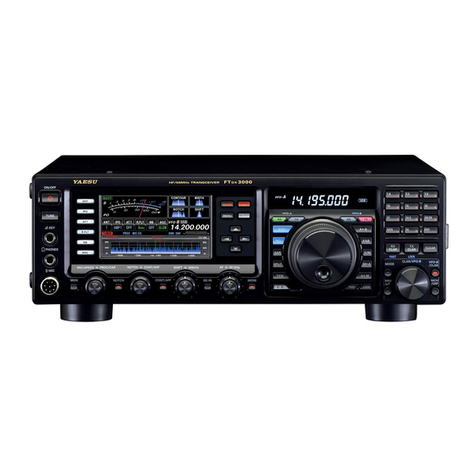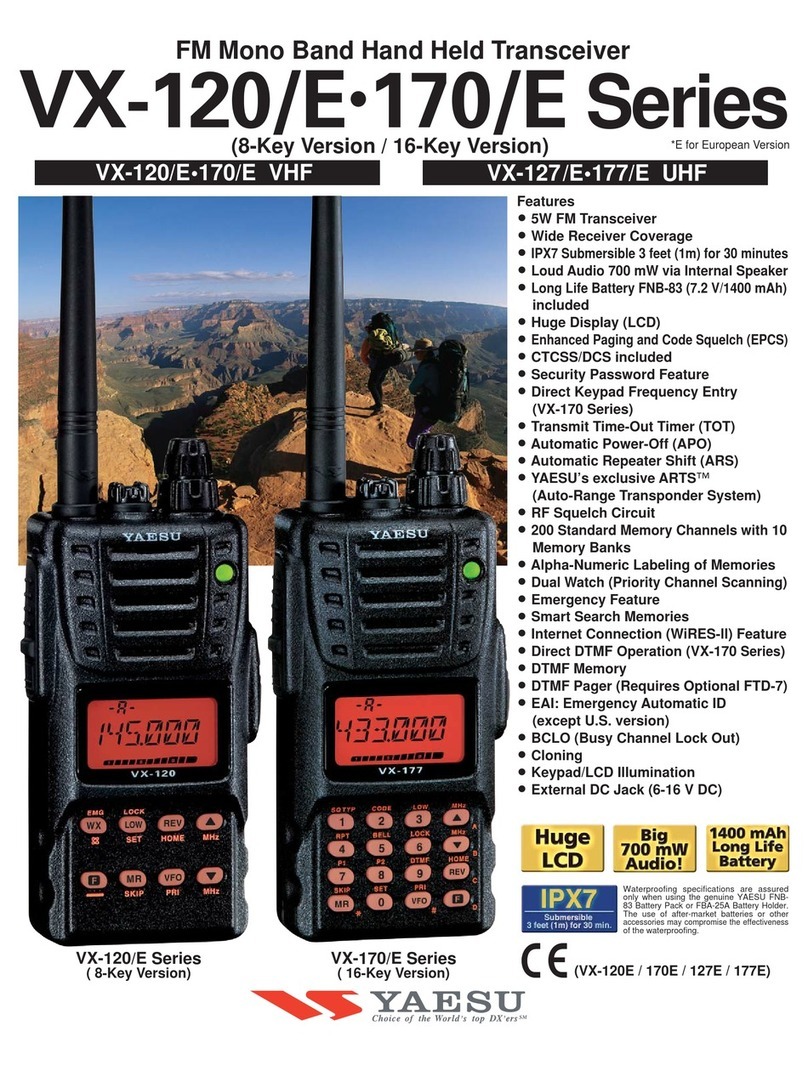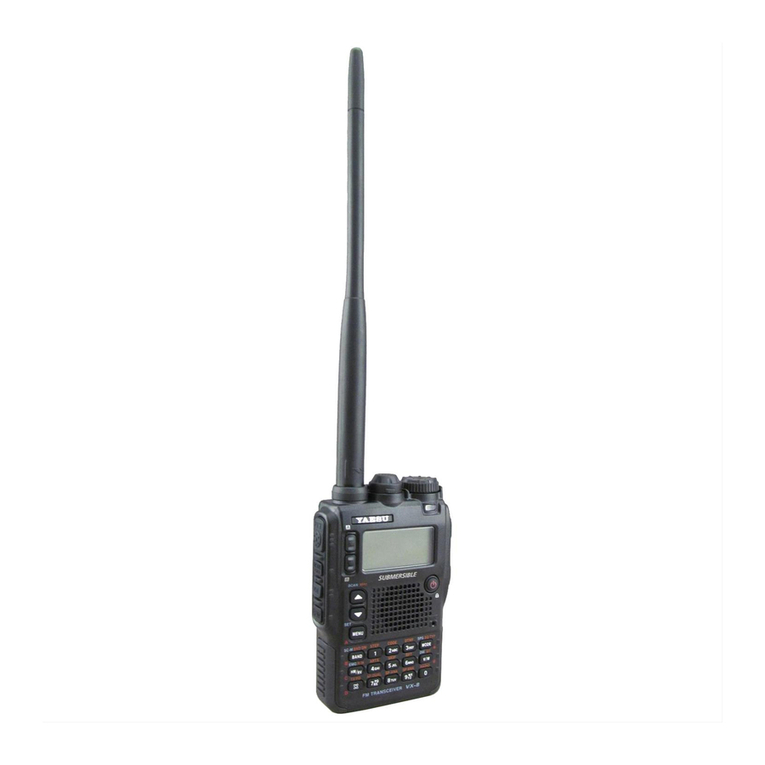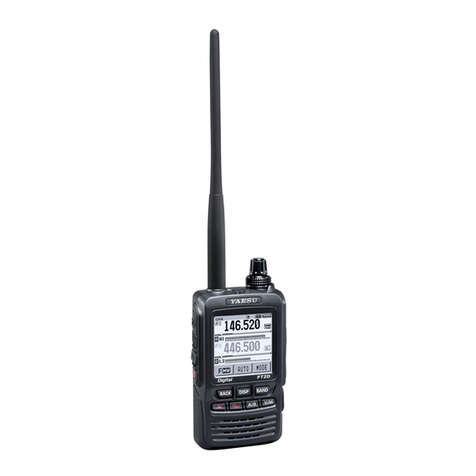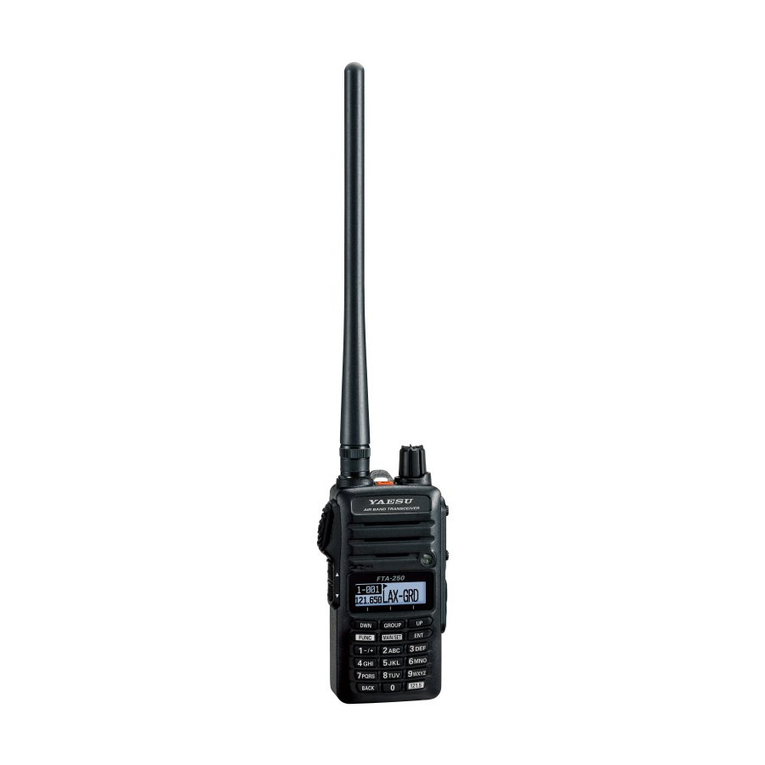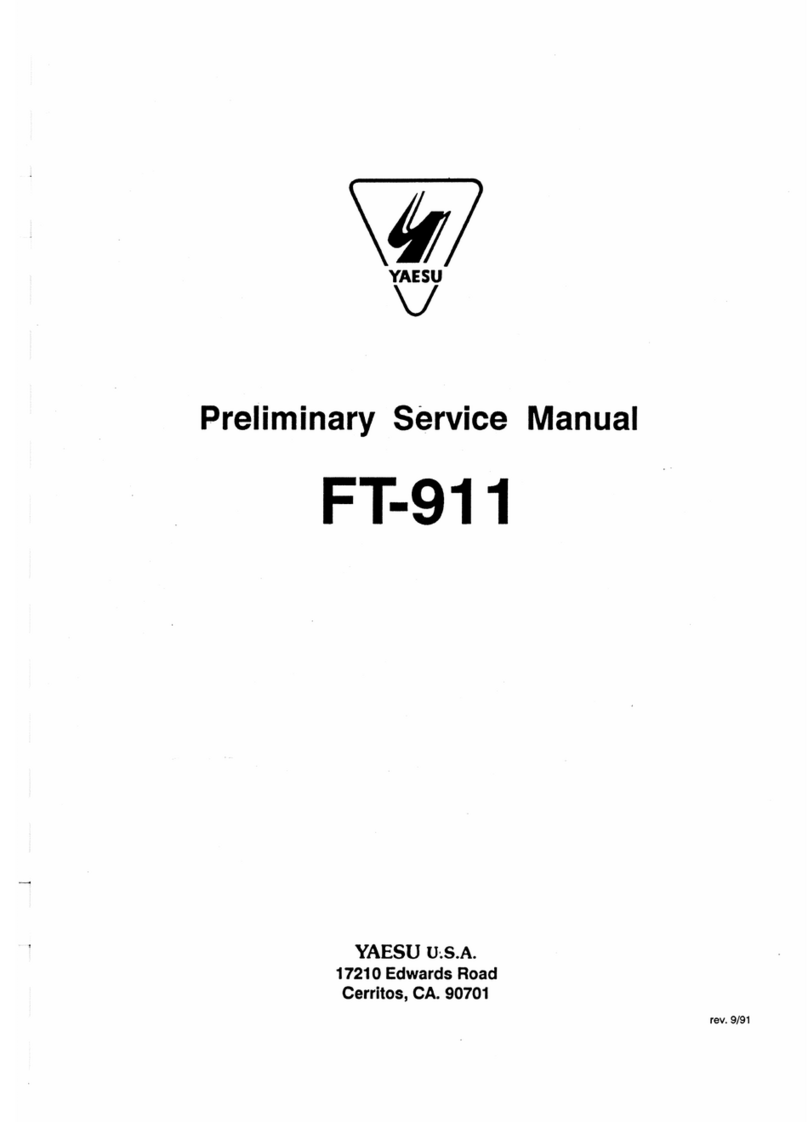
Index
Introduction.................................................... 1
About this manual ......................................... 1
Safety Precautions ........................................ 2
Accessories & Options ................................. 4
Supplied Accessories.................................... 4
Optional Accessories .................................... 4
Front Panel Controls & Switches................. 5
Microphone Switches.................................... 7
Rear Panel Connectors................................. 8
Installation...................................................... 9
Preliminary Inspection................................... 9
Installation Tips ............................................. 9
Antenna Consideration ............................... 10
About coaxial cable..................................... 10
Mobile Installation ....................................... 10
Base Station Installation ............................. 12
Basic Operation........................................... 13
Turning the Transceiver On and Off............ 13
Adjusting the Audio Volume Level............... 13
Adjusting the Squelch Setting ..................... 13
Frequency Navigation ................................. 14
Transmission............................................... 15
Advanced Operation ................................... 16
Weather Broadcast Reception (USA Version)
... 16
LOCK Feature............................................. 17
Keyboard Beeper ........................................ 17
Channel Step Selection .............................. 18
Display Brightness ...................................... 18
RF Squelch ................................................. 18
Repeater Operation ..................................... 19
Standard Repeater Shift ............................. 19
Automatic Repeater Shift ............................ 20
Checking the Repeater
Uplink (Input) Frequency.... 20
CTCSS/DCS/EPCS Operation..................... 21
CTCSS Operation ....................................... 21
DCS Operation............................................ 23
Tone Search Scanning................................ 24
EPCS (Enhanced Paging &
Code Squelch) Operation .... 25
CTCSS/DCS/EPCS Bell Operation............. 27
Split Tone Operation ................................... 27
DTMF Operation........................................... 28
Manual DTMF Tone Generation.................. 28
DTMF Autodialer ......................................... 28
Memory Operation....................................... 30
Memory Storage ......................................... 30
Storing Independent Transmit
Frequencies (“Odd Splits”).... 31
Memory Recall ............................................ 32
Labeling Memories...................................... 33
Memory Tuning ........................................... 34
Masking Memories...................................... 34
Memory Bank Operation ............................. 35
Home Channel Memory .............................. 37
Memory-Only Mode .................................... 37
Scanning ...................................................... 38
Basic Scanner Operation ............................ 38
Scan-Resume Options................................ 39
Memory Skip Scanning ............................... 39
Preferential Memory Scan .......................... 40
Memory Bank Link Scan ............................. 41
Programmable Band-Scan Limits ............... 41
Priority Channel Scanning (Dual Watch)..... 42
Weather Alert Scan ..................................... 43
Band Edge Beeper...................................... 43
Smart Search Operation ............................. 44
Internet Connection Feature....................... 45
SRG (“Sister Radio Group”) Mode.............. 45
FRG (“Friends’ Radio Group”) Mode........... 45
ARTS™ (Automatic Range
Transponder System).... 48
CW Training Feature.................................... 51
Packet Operation......................................... 52
Miscellaneous Settings............................... 53
Password .................................................... 53
Time-Out Timer (TOT)................................. 54
Automatic Power-Off (APO)........................ 54
Busy Channel Lock-Out (BCLO)................. 55
Programming the Key Assignments............ 56
FM Bandwidth & TX Deviation Level .......... 57
MIC Gain Setting......................................... 57
DCS Code Inversion ................................... 58
Reset Procedure.......................................... 59
Microprocessor Resetting ........................... 59
Set Mode Resetting .................................... 59
Cloning ......................................................... 60
“Set” (Menu)Mode ...................................... 61
Menu Selection Details ............................... 64
Specifications .............................................. 73
After-market Services ................................. 74
